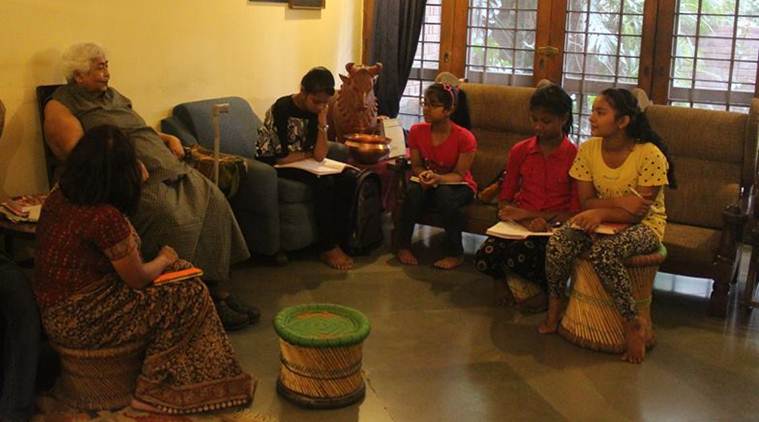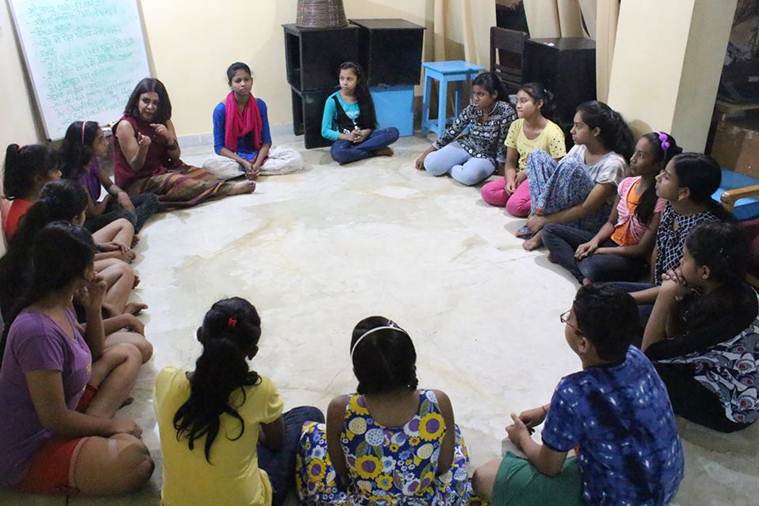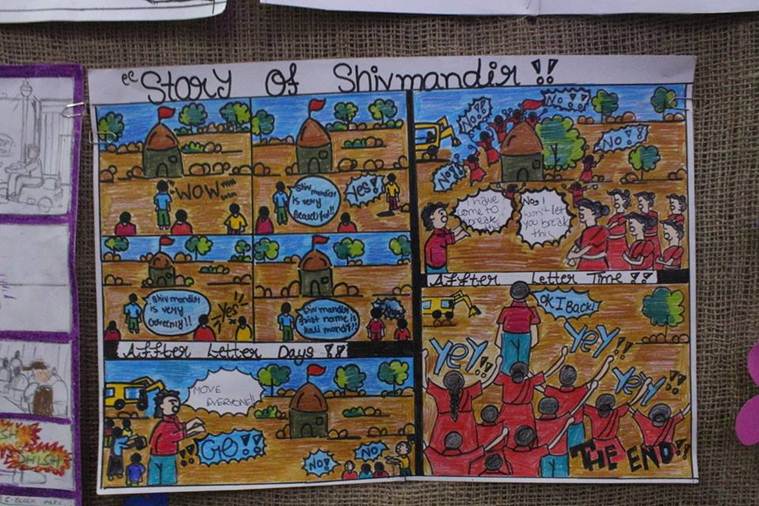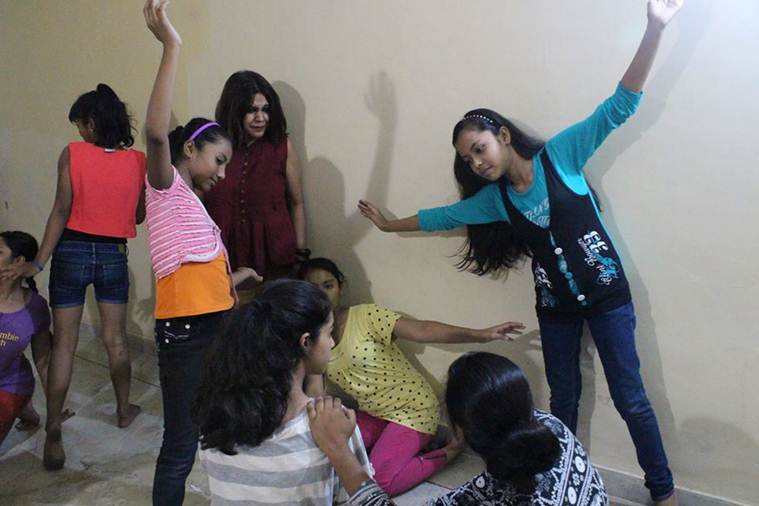
All of 12, Tushar is all wide-eyed as he narrates the “most interesting history” of 76-year-old Professor Kalyan Sen, who he fondly calls Sen Dadu. Tushar is among the 15 children who have been active participants of a project in Delhi’s Chittaranjan Park (C R Park), facilitated by theatre and social activism group Shapno Ekhon, to chronicle the history of this Bengali enclave set up to rehabilitate those displaced by Partition.
The ‘Neighbourhood Diaries’ project was conceived in 2016 and is aimed at archiving the history of C R Park through the eyes of the children of the locality. Last week, Shapno Ekhon launched the process document of the first phase of the project and listed out its objectives for the second phase which is about to begin soon. “Children are not just innocent, nice cute human beings. What about the rich perspectives they bring to anything they come across?” asks project coordinator Shahana Chakrabarty, explaining why they decided to let children lead the project. “I also think it works well as a social intervention strategy wherein we try to make an inclusive community, getting generations together,” she says.
Story continues below this ad
The two-year-long project began with the coordinators selecting 34 narrators from the neighbourhood who would be willing to share their personal histories with the children. “Most elderly people around have a lot of information. It’s a different skill altogether to be able to communicate with children,” says project guide Shomik Ray. Ashish Ghosh who was one of the narrators is a retired professor of Political Science and has been actively involved in teaching theatre to children for decades. “When they told me about the project I was happy that children would be part of it, but I also think that it should not be limited to them,” he says. The next step was to bring in the children. Chakrabarty along with another coordinator, Shukla Banik, went about visiting schools, bus stops and cultural events at C R Park disseminating information about their project and convincing children and their parents to be part of it. “It was challenging. Children are interested, but the problem is with the way our society thinks about certain subjects,” says Banik.
 Chakrabarty along with another coordinator, Shukla Banik, went about visiting schools, bus stops and cultural events at C R Park disseminating information about their project and convincing children and their parents to be part of it. (Photograph provided by Shapno Ekhon)
Chakrabarty along with another coordinator, Shukla Banik, went about visiting schools, bus stops and cultural events at C R Park disseminating information about their project and convincing children and their parents to be part of it. (Photograph provided by Shapno Ekhon)
Most children who went on to join the project are in fact not particularly fond of studying history as a subject in school. Asked if she likes history in school, 15-year-old Yashaswini promptly shakes her head and says no. “I want to be a journalist, so I found the idea of interviewing people very interesting,” she says. “But I do find History more interesting now. I guess its because we are not mugging up from textbooks and are instead learning through stories.”
The first part of the project began with a few sessions on self-history, wherein the children were asked to dig into their own past and share some details of their or their family’s past. At the next stage they had to be prepared for the interviews with the narrators. Advisors and historians were brought in to guide in the process of preparing questionnaires and preparing the children in the art of interviewing. Historians Swapna Liddle, Narayani Gupta and Samik Bandhopadhya were integral to the process of advising and training the children. “Most of the times Shahana and I would come up with very adult-like questions, but kids would sometimes come up with other queries that we might not find important enough. But they did lead to some remarkable discoveries,” says Banik. She went on to narrate an incident wherein they had visited an 80-year-old narrator who mentioned that there were electricity issues in C R Park previously and that she got into a number of fights because of that. The children started probing about these fights and then we realised that at that time there was a DESU office right here in somebody’s house. Every time there would be a power cut people would go there and start fighting. Finally, they got so scared that they had to shift their office out.
 A comic strip prepared by children telling the story of C R Park (Photograph provided by Shapno Ekhon)
A comic strip prepared by children telling the story of C R Park (Photograph provided by Shapno Ekhon)
In the last stage of the project, the children documented the stories they had collected in the form of comic strips, songs, poems, and theatre performances. “Tushar wrote a rock song on Kalyan Sen which went like, ‘Jab main apne bhai ke saath aaya C R Park’ (When I came with my brother to C R Park),” says Banik. “As adults there are certain stereotypes we have about incidents that we feel children would be uncomfortable with. For instance, there was a terrorist attack here in the late 80s when people died. Initially, we thought it’s better to not speak about it. But the maturity with which they dealt with it and the way they presented it through poems and skits took away our prejudices,” explains Ray.
Story continues below this ad
 In the last stage of the project the children documented the stories they had collected in the form of comic strips, songs, poems, and theatre performances. (Photograph provided by Sopno Akhon)
In the last stage of the project the children documented the stories they had collected in the form of comic strips, songs, poems, and theatre performances. (Photograph provided by Sopno Akhon)
The team of Neighbourhood Diaries has been actively transcribing each of the interviews collected. “We want to publish a book on C R Park and also open a museum that tells the story of Bengalis in Delhi,” says Chakrabarty. They are also looking at making similar interventions in other neighbourhoods and communities, now that they have a model in front of them. “For instance, we have been thinking of delving into the Tibetan community in Delhi,” says Shahana. But whatever be the locality and whatever be its history, it is children who would be at the forefront of documenting it.

 The ‘Neighbourhood Diaries’ project was conceived in 2016 and is aimed at archiving the history of C R Park through the eyes of the children of the locality. (Photograph provided by Shapno Ekhon)
The ‘Neighbourhood Diaries’ project was conceived in 2016 and is aimed at archiving the history of C R Park through the eyes of the children of the locality. (Photograph provided by Shapno Ekhon)
 Chakrabarty along with another coordinator, Shukla Banik, went about visiting schools, bus stops and cultural events at C R Park disseminating information about their project and convincing children and their parents to be part of it. (Photograph provided by Shapno Ekhon)
Chakrabarty along with another coordinator, Shukla Banik, went about visiting schools, bus stops and cultural events at C R Park disseminating information about their project and convincing children and their parents to be part of it. (Photograph provided by Shapno Ekhon) A comic strip prepared by children telling the story of C R Park (Photograph provided by Shapno Ekhon)
A comic strip prepared by children telling the story of C R Park (Photograph provided by Shapno Ekhon) In the last stage of the project the children documented the stories they had collected in the form of comic strips, songs, poems, and theatre performances. (Photograph provided by Sopno Akhon)
In the last stage of the project the children documented the stories they had collected in the form of comic strips, songs, poems, and theatre performances. (Photograph provided by Sopno Akhon)





























